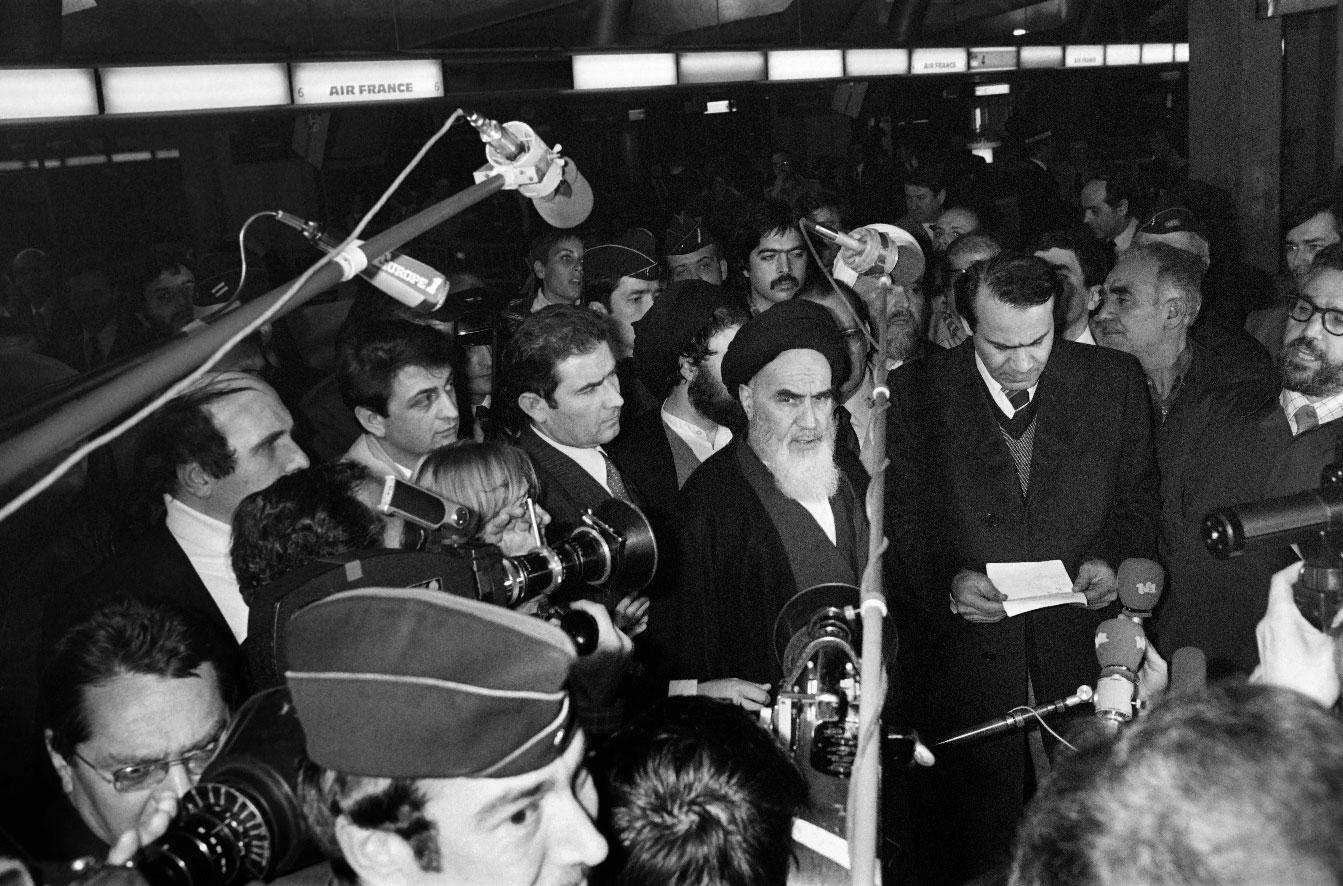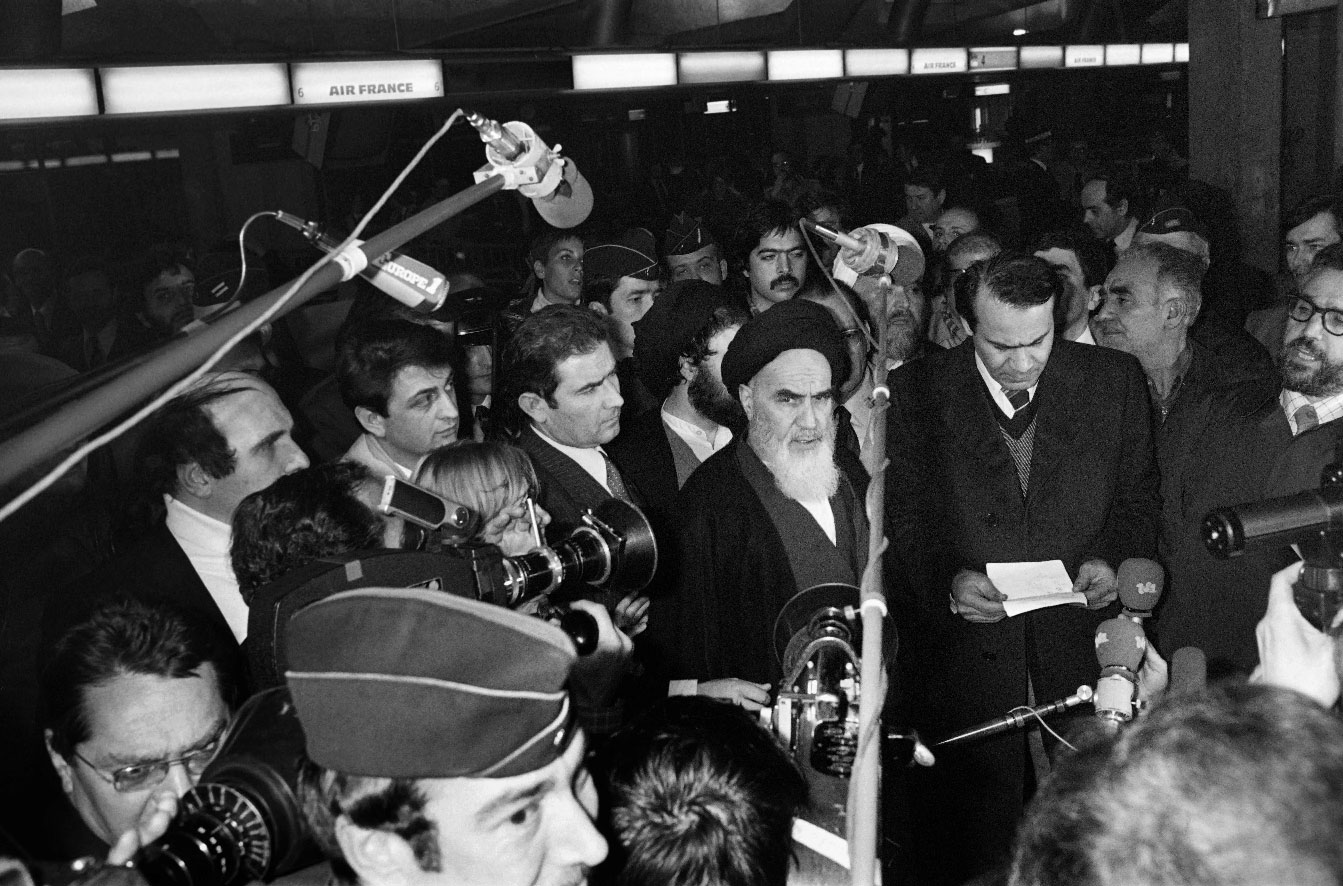Khomeini's legacy looms over Iran 30 years after death
TEHRAN - Thirty years ago millions of mourners crowded the streets of Tehran for the funeral of Ayatollah Ruhollah Khomeini, and today the founder of the Islamic republic remains a guiding figure in Iran.
The image of the black-turbaned cleric who brought down the monarchy in 1979 stares out at people across the country, from hotel lobbies and the front of stadiums to hospitals and banknotes.
In life Khomeini was recognised by his followers as the "Imam", leader of the Shiite community, and decades after his death he remains enshrined in the Iranian constitution as "the great source of imitation".
Mohammad Marandi, head of the American studies department at Tehran University, says that Iranians today see Khomeini's legacy as upholding "the strong notion of independence, sovereignty and resilience against foreign hegemony and imperialism that still continues to exist among Iranians."
Born in 1902, Khomeini died on 3 June 1989 following a battle with cancer just over 10 years after he led the Islamic revolution that swept Iran's last shah Mohammad Reza Pahlavi, a key US ally, from power.
His ascension over the shah saw a rapid process of Islamisation thrust upon Iranian society - and the revolutionary fervour was viewed with concern by neighbouring dictators.
His rule saw a decade of tensions with the "Great Satan" Washington and the brutal 1980-88 war unleashed by Saddam Hussein's Iraq that ended a year before he passed.
Religious scholar
Ruhollah, whose name means "spirit of Allah", was born in 1902 to a family of religious clerics in Khomein in central Iran, and later adopted his hometown's name.
He was only a few months old when his father was murdered because of his opposition to the imperial regime.
Brought up by his mother and aunt, he undertook religious studies, notably in the Shiite holy city of Qom, south of Tehran.
In 1929, he married a 16-year-old girl with whom he had three daughters and two sons.
He mastered philosophy along with Islamic law and jurisprudence and started teaching, gaining a reputation for his knowledge and moral rigour. He also studied less traditional aspects of Shiism, including the mystical strain of "erfan", and composed his own poetry.
By the late 1950s he was being considered an ayatollah, which means "sign of God" and designates a high-ranking Shiite cleric, though he found himself increasingly at odds with a religious establishment that preferred to stay out of politics.
Khomeini became a fierce opponent of the pro-Western shah, Mohammad Reza Pahlavi, particularly over a series of agricultural and social reforms that threatened the land-owning elite and their clerical allies and sought to grant women the right to vote.
Jailed and exiled
In an inflammatory sermon in 1963, Khomeini warned the shah that he risked being overthrown by the people if he continued along his reformist path -- a speech that led to his imprisonment.
A year later, he was forced into exile following a vehement outburst after the shah had given diplomatic immunity to US military personnel.
He went first to Turkey and then to Iraq in 1965, where he set up base in the Shiite holy city of Najaf. Expelled from Najaf by Iraqi authorities, Khomeini moved to France in 1978, leading the last stages of the Islamic revolution from a Paris suburb.
His fierce diatribes against the shah were recorded on cassettes and smuggled into Iran, where the bloody repression of demonstrations was bringing ever larger numbers of people into the streets.
As the protests grew, the shah fled Tehran on January 16, 1979. And on February 1 "the flight of the revolution" brought Khomeini back in triumph. The Islamic republic was proclaimed on April 1.
Among Khomeini's most urgent priorities was ousting the United States -- the shah's main ally -- which he labelled the "Great Satan" .
In November 1979, radical student followers of Khomeini held 52 US diplomats and citizens hostage at the US embassy in Tehran for 444 days. Although it was not immediately directed by Khomeini, he saw an opportunity to ensure the revolution maintained its radical direction, and relations with Washington have never recovered.
At the end of 1979, Khomeini was made the "leader" ("rahbar") after the new constitution of the Islamic Republic of Iran was enacted, based on his doctrine of velayat-e faqih.
In 1980, Iraq's Saddam Hussein sought to exploit the upheaval in Iran and launched a war over disputed territory and to prevent the spread of dissent among Iraq's own Shiite population.
Iran's nascent revolutionary government put up a surprisingly effective defence, but was dragged into eight long years of conflict before Khomeini reluctantly accepted a ceasefire.
The nation was devastated by the conflict, but it greatly strengthened the Islamic system, which triumphed over Marxist and liberal internal opponents.
'Pragmatism'
Throughout the 1970s, Khomeini had co-opted some of the left-wing rhetoric popular among students and activists, defining the movement against the shah as one of oppressed masses taking on a tyrant. In this, he could draw on centuries of Shiite symbolism around martyrdom and resistance that gave his message mass appeal.
Khomeini's teaching was centred on the defence of Islam and the underprivileged and a fierce rejection of Western modernity and perceived imperialism.
It was during his time in Iraq that he developed his doctrine of velayat-e faqih (guardianship of the jurist), declaring all forms of monarchy unjust and stating that political leadership should be in the hands of religious judges as the only people with the authority to interpret and implement divine law.
He stated that power should be vested in a supreme spiritual leader chosen for his piety to direct both the state and believers. The theocratic principle forms the cornerstone of the Iranian system that combines elected institutions with religious control aimed at giving the Islamic republic both divine and popular legitimacy.
"Velayat-e Faqih is not a concept that he created. It existed in Shiite jurisprudence over many centuries," said Marandi.
"What was new was that he actually was able to overthrow a Western-backed dictatorship in the country and establish an Islamic republic" that allowed Iran to put the "theory into practice".
The overthrow of the monarchy was achieved thanks to a disparate array of forces that mixed Shiite clerics, with secular nationalists and Marxists.
But after the regime fell Khomeini showed a ruthless determination to shut out those erstwhile allies as he staved off all challenges from them and supporters of the shah.
In an August 1979 speech the ayatollah exhorted his followers to show no pity for the "enemies" of the revolution, lamenting displays of leniency.
"If we had acted as revolutionaries, broken the pens of all the press and closed down all corrupt magazines and corrupt media, prosecuted their corrupt bosses, and banned the corrupt political parties, and set up hanging scaffolds in main squares... we would not be facing these struggles," he said.
Former French ambassador to Tehran Francois Nicoullaud said Khomeini combined both "the pragmatism that it took to get power and to keep it, and the merciless behaviour towards the enemies of the Islamic revolution".
"He was for the Velayat-e faqih...and he accepted having elected institutions," he said, ticking off examples of the leader's flexibility.
"He wanted to go all the way against Saddam Hussein and finished by accepting a peace that had no victor and no vanquished."
'Changed Iranian society'
While Khomeini has become a major historic figure, he continues to play a central role in discourse in Iran decades after his death.
"The ayatollah's charisma is kept alive in the political debate," said Clement Therme, an Iran specialist at the International Institute of Strategic Studies (IISS).
"All the political elites of the Islamic republic claim to be his heirs and his words are used in the debate to score points off opponents."
The splits that run through the country's rulers are fed by "different interpretations" of Khomeini's thoughts, Therme said.
On the one side are reformists "who insist on the popular elected legitimacy of institutions" and on the other are the conservatives focused on "divine legitimacy", he said.
While the disputes may rage over Khomeini's political legacy there is little doubt that he transformed Iran and remains for many in the country a major authority.
Khomeini "literally changed Iranian society, (from) a country that was subservient to the needs and interests of foreign entities to prioritising the needs, the dignity, beliefs, culture and the interests of the indigenous population," said Marandi from Tehran University.


